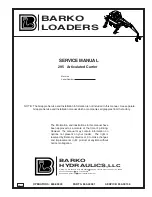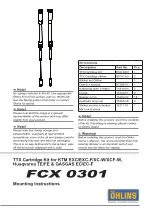
IzoT U60 DIN Network Interface User’s Guide
21
BYTE 0 BYTE 1 BYTE 2 BYTE 3
Escape: Sequence #, Param Data Packet
0x7E ACK bit, Checksum
Type Code
(excludes
0x7E)
Sequence ACK Type Code
[D7 – D5] [D4] [D3 – D0]
The second byte contains a 3-bit sequence number in the sequence bits (D7-D5), a
single ACK bit (D4), and a 4-bit Type Code bits (D3-D0). You cannot form the escape
code by combining a Type Code value with the sequence number (0x0E is not
allowed). As a result, you can create 15 different codes. The Type Code values are
described in the next section.
The sequence number is cycled through between values ‘1’ and ‘7’, with ‘0’ being an
initialization value. When a code packet is received that has the same sequence
number as the previous code packet received, the new packet (and any following
data) is rejected (this transfer will be acknowledged if necessary). The exception is if
the sequence number is zero. The zero sequence number may be used for any
idempotent code packet or message.
The third and fourth bytes may contain the escape code value, but they will not be
interpreted as escape codes. This may cause minor re-synchronization issues if this
packet is broken; however, it ensures a constant code packet size.
The packet checksum is an 8-bit value that, when added to the first three bytes,
results in an 8-bit zero result.
The code packet has the following features:
•
Asynchronous method of presenting itself at any time (by using an
escape sequence)
•
Checksum verification
•
Data transfer initiation
•
Duplication detection using a sequence number—duplicates
may be sent when an expected response is lost or broken
and does not occur within a time-out period
Data outside of the code packet is restricted to either a
message
or a
multi-byte local
network interface command or response
and is always enclosed with a length byte in
the front and a checksum at the end. The length byte does not account for the
checksum at the end—the inclusion of the checksum is implied. The checksum covers
the data that preceded it; therefore, it does include the length byte.
All data outside a code packet must include an escape prefix before any escape data
values. For example, if a 0x7E value appears in the sequence it must be followed by
another 0x7E (the first 0x7E value is the escape prefix). Checksum bytes and length
bytes must be preceded with escape prefixes.
Содержание IzoT U60 DIN
Страница 5: ......
Страница 18: ...IzoT U60 DIN Network Interface User s Guide 16...
Страница 30: ...IzoT U60 DIN Network Interface User s Guide 28...
Страница 34: ......












































